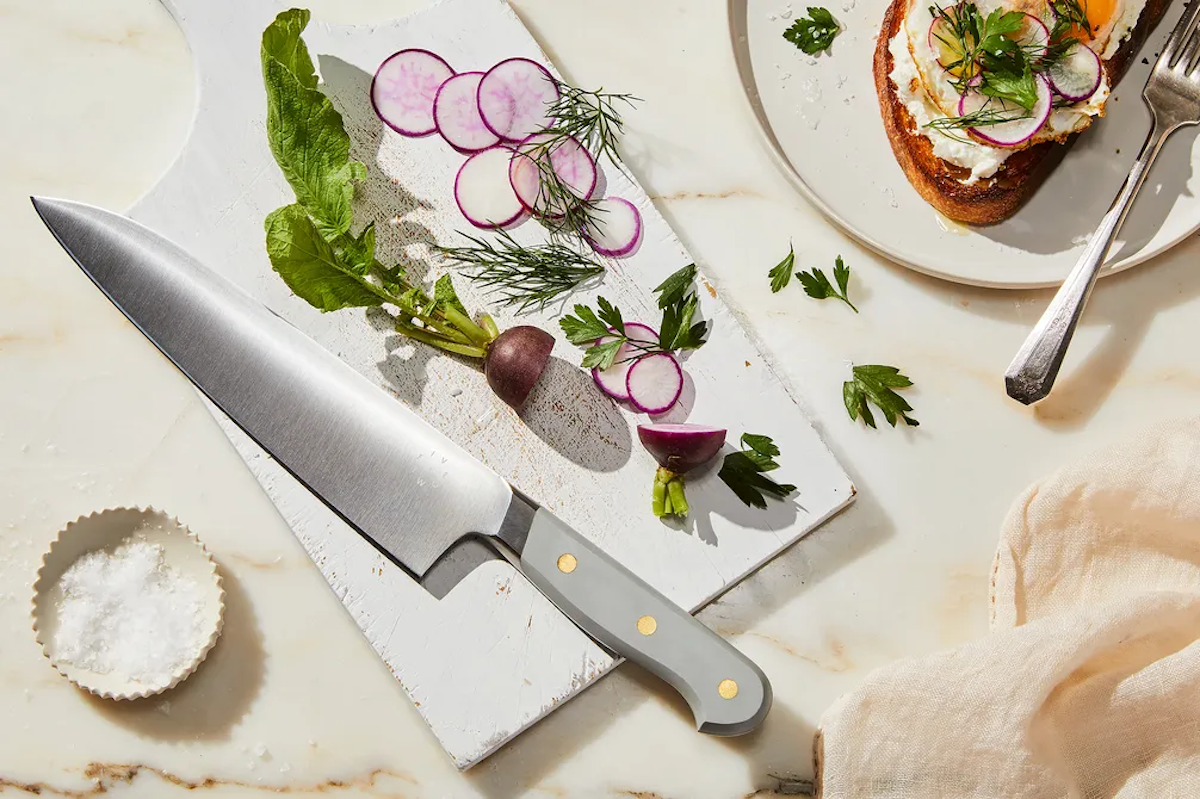Even the sharpest knife gets dull over time — the more you cook, the duller your most important tool becomes. It’s only through regular maintenance that chefs and home cooks keep their blades sharp.
So how often should sharpen your knives? Well, the short answer is whenever they start to feel dull — which can vary depending on the quality of your knives and how often you use them. For most home cooks, this will likely be two to three times a year. Can your knife cut a tomato cleanly? If not, it’s time to sharpen it. You can also use the paper test: Hold a sheet of printer paper up in one hand and try to slice it vertically. If you have trouble hacking through the paper, your knife could stand to be sharper.
To sharpen your knives at home, you can use an electric sharpener or a whetstone (also called a sharpening stone). Electric sharpeners require little effort on your end, but stones are generally the preferred choice since they’re gentler on blades, relatively inexpensive, and easy to use. Stuck between the two? Here’s how to sharpen your knives with electric sharpener and a whetstone.
How to sharpen a knife with a whetstone
If you have a very nice knife, sharpen it with a whetstone like this. It’s relatively inexpensive for a kitchen tool and you’ll get years of use out of it, too.
Sharpening stones come in different sizes and grits (the stone’s level of coarseness), which are often indicated by color. Some stones have two sides: a coarser side for removing dents and sharpening very dull blades, and a more refined side for polishing and edge refinement. The rule of thumb is to always start sharpening your knife on the coarse side and then moving to the refined side to finish.
- If your countertop is slippery, place a rubber mat or towel underneath the stone before doing literally anything at all — you really don’t want to hurtself here!
- Some stones need to be oiled or soaked in water first, so check the manual that comes with yours to be sure.
- Once you’re ready to start sharpening, flip over to the coarser side of the stone.
- Hold your knife with the edge of the blade facing toward your body at a 15 to 20 degree angle against the surface — this can vary slightly from knife to knife, so again, double-check the info that came with yours.
- Rest the fingers on the other hand on the flat side of the knife and push it away from you in one stroke, repeat about 10 times. Flip the knife over and do 10 strokes on the other side.
- Test with a tomato or paper and,if it’s still not sharp enough, repeat until your knife is back to its former glory. That’s it!
How to sharpen a knife with an electric sharpener
An electric knife sharpener is similar to a pencil sharpener — it simply obliterates the old edge and creates a new one. It’s the fastest way to restore your blade to “health,” but it’s also the most brutal. The edge of a knife is a carefully tapered compression of metal layers, so the thwacking sends the atomically aligned edge into disarray, or worse — it can chip tiny divots into the metal.
For the average knife, there are worse fates. But, if you happen to own a Japanese cold-forged sabatier, it’ll be a sad (and expensive) day.
When to use a honing steel
Once your knife is sharpened, you’ll want to keep it that way for as long as possible. Try to get into the habit of using a honing steel every time you take out your knife. It kind of looks like a metal lightsaber and is basically like a short cardio excercise for your blade, aligning all of the metallic ions in the knife’s edge so you can cut with ease and precision.
Hold the honing steel vertically against your kitchen counter and with your non-dominant hand. Then hold the knife nearly flat against the steel at about 22 degrees (think about it as half of 45 degrees), then draw it across the steel 10 times on each side. The steel won’t restore the edge to a dull knife, but it will help you keep an edge longer on a well-maintained knife.



